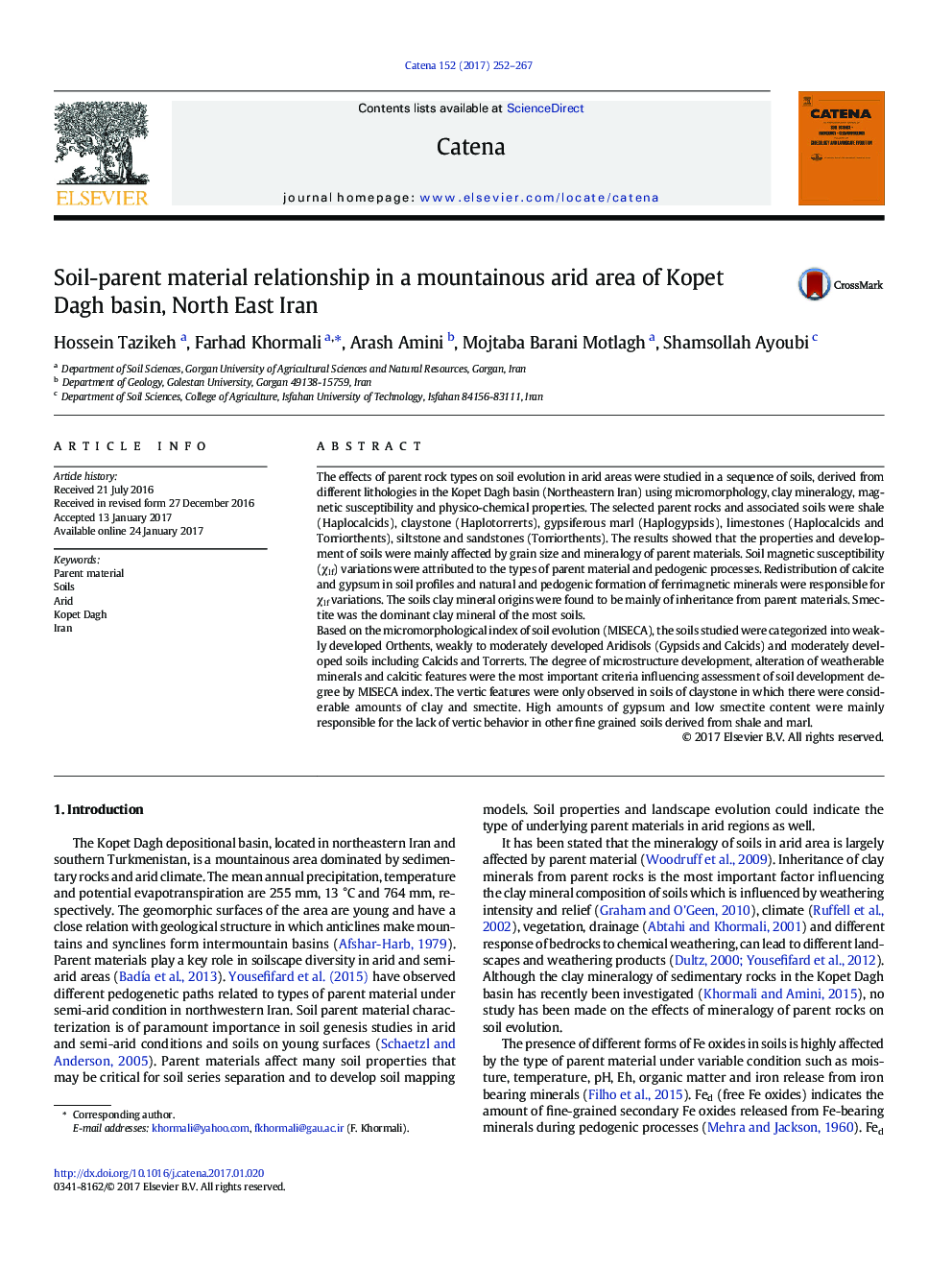| کد مقاله | کد نشریه | سال انتشار | مقاله انگلیسی | نسخه تمام متن |
|---|---|---|---|---|
| 5769965 | 1629202 | 2017 | 16 صفحه PDF | دانلود رایگان |
- Close genetic relation between soils and parent materials is indicated in arid area.
- Soil development is mainly affected by texture and mineralogy of parent materials.
- High gypsum content was found as preventing factor for vertic properties.
The effects of parent rock types on soil evolution in arid areas were studied in a sequence of soils, derived from different lithologies in the Kopet Dagh basin (Northeastern Iran) using micromorphology, clay mineralogy, magnetic susceptibility and physico-chemical properties. The selected parent rocks and associated soils were shale (Haplocalcids), claystone (Haplotorrerts), gypsiferous marl (Haplogypsids), limestones (Haplocalcids and Torriorthents), siltstone and sandstones (Torriorthents). The results showed that the properties and development of soils were mainly affected by grain size and mineralogy of parent materials. Soil magnetic susceptibility (Ïlf) variations were attributed to the types of parent material and pedogenic processes. Redistribution of calcite and gypsum in soil profiles and natural and pedogenic formation of ferrimagnetic minerals were responsible for Ïlf variations. The soils clay mineral origins were found to be mainly of inheritance from parent materials. Smectite was the dominant clay mineral of the most soils.Based on the micromorphological index of soil evolution (MISECA), the soils studied were categorized into weakly developed Orthents, weakly to moderately developed Aridisols (Gypsids and Calcids) and moderately developed soils including Calcids and Torrerts. The degree of microstructure development, alteration of weatherable minerals and calcitic features were the most important criteria influencing assessment of soil development degree by MISECA index. The vertic features were only observed in soils of claystone in which there were considerable amounts of clay and smectite. High amounts of gypsum and low smectite content were mainly responsible for the lack of vertic behavior in other fine grained soils derived from shale and marl.
Journal: CATENA - Volume 152, May 2017, Pages 252-267
